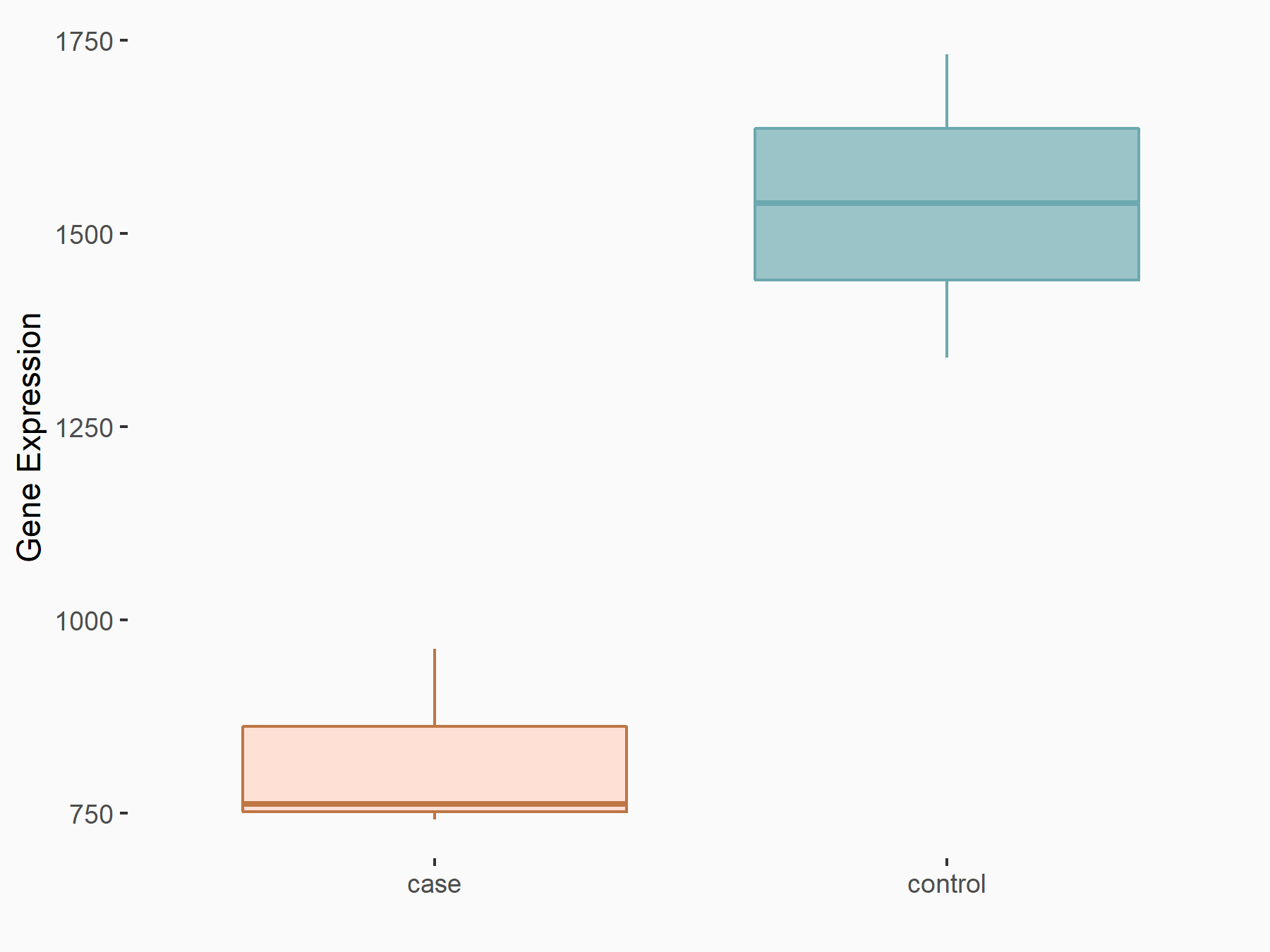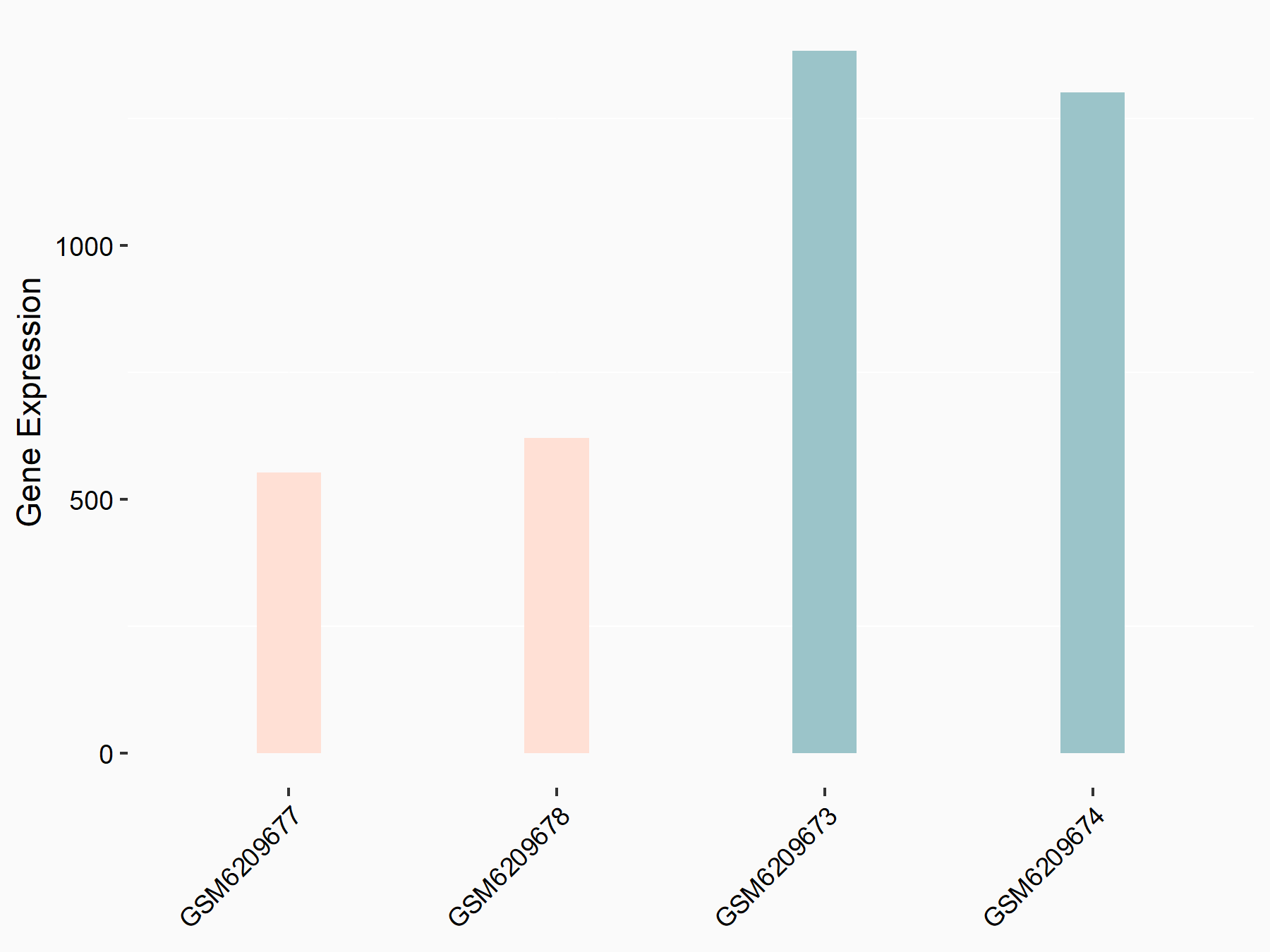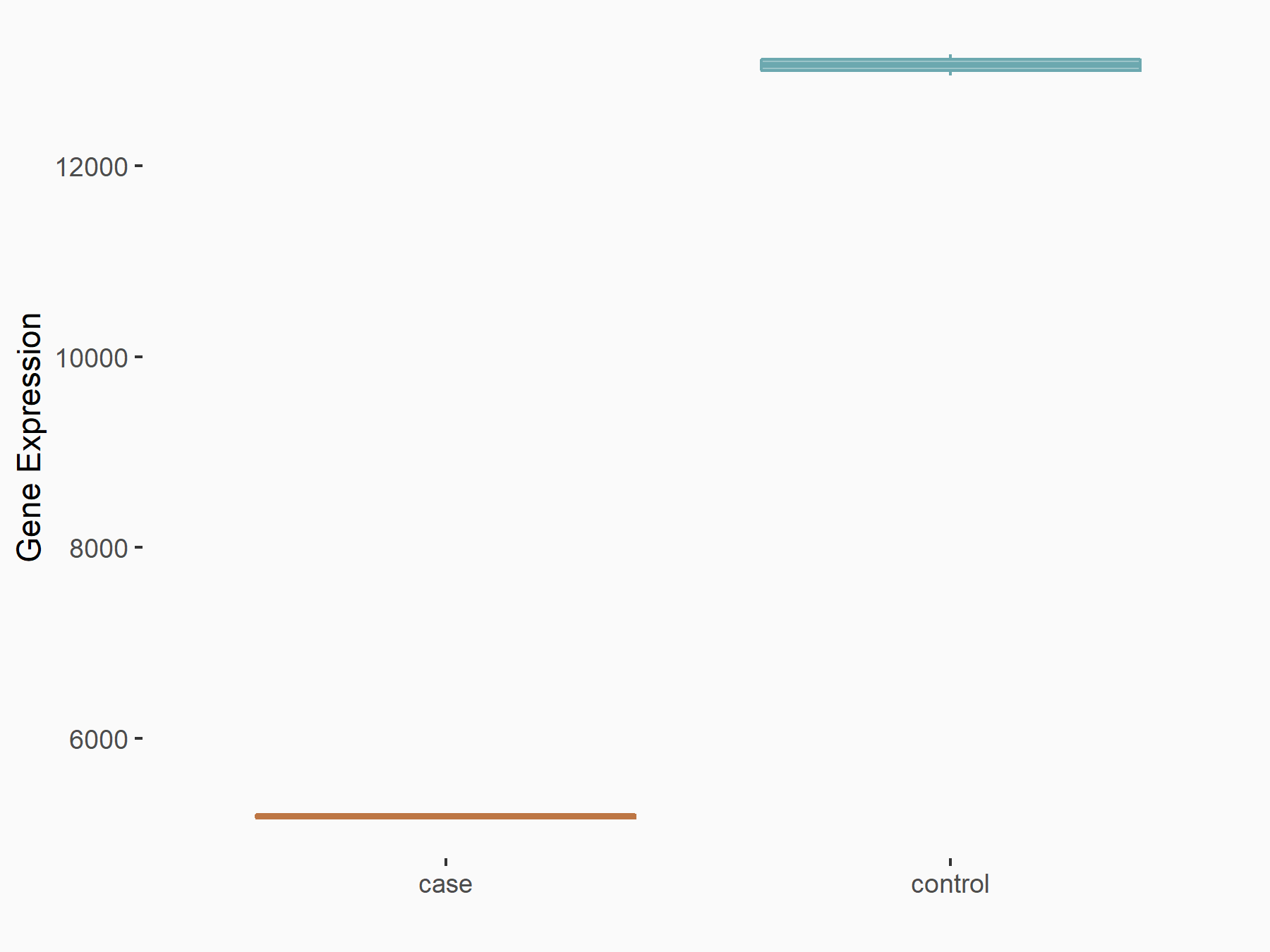m6A Target Gene Information
General Information of the m6A Target Gene (ID: M6ATAR00486)
Full List of m6A Methylation Regulator of This Target Gene and Corresponding Disease/Drug Response(s)
THBS1
can be regulated by the following regulator(s), and cause disease/drug response(s). You can browse detail information of regulator(s) or disease/drug response(s).
Browse Regulator
Browse Disease
YTH domain-containing family protein 2 (YTHDF2) [READER]
| Representative RNA-seq result indicating the expression of this target gene regulated by YTHDF2 | ||
| Cell Line | Human umbilical cord blood CD34+ cells | Homo sapiens |
|
Treatment: YTHDF2 knockdown UCB CD34+ cells
Control: Wild type UCB CD34+ cells
|
GSE107956 | |
| Regulation |
  |
logFC: -9.06E-01 p-value: 2.97E-03 |
| More Results | Click to View More RNA-seq Results | |
| Representative RIP-seq result supporting the interaction between THBS1 and the regulator | ||
| Cell Line | Hela | Homo sapiens |
| Regulation | logFC: 2.48E+00 | GSE49339 |
| In total 1 item(s) under this regulator | ||||
| Experiment 1 Reporting the m6A Methylation Regulator of This Target Gene | [1] | |||
| Response Summary | In prostate cancer, METTL14 downregulated Thrombospondin-1 (THBS1) expression in an m6A-dependent manner, which resulted in the recruitment of YTHDF2 to recognize and degrade Thrombospondin 1 (THBS1) mRNA. | |||
| Target Regulation | Down regulation | |||
| Responsed Disease | Prostate cancer | ICD-11: 2C82 | ||
| Pathway Response | RNA degradation | hsa03018 | ||
| Cell Process | Cell proliferation | |||
| In-vitro Model | PC-3 | Prostate carcinoma | Homo sapiens | CVCL_0035 |
| DU145 | Prostate carcinoma | Homo sapiens | CVCL_0105 | |
| In-vivo Model | Stably transfected shMETTL14 and shNC DU145 cells (5×106 cells) suspended in a mixture of 100uL PBS were subcutaneously injected into the right flank of male nude BALB/C mice (6-8 weeks old) to induce tumor formation. | |||
Insulin-like growth factor-binding protein 3 (IGFBP3) [READER]
| Representative RNA-seq result indicating the expression of this target gene regulated by IGFBP3 | ||
| Cell Line | SAS cell line | Homo sapiens |
|
Treatment: siIGFBP3 SAS cells
Control: siControl SAS cells
|
GSE205275 | |
| Regulation |
  |
logFC: -1.19E+00 p-value: 1.58E-03 |
| More Results | Click to View More RNA-seq Results | |
| In total 1 item(s) under this regulator | ||||
| Experiment 1 Reporting the m6A Methylation Regulator of This Target Gene | [2] | |||
| Response Summary | IGFBP3 was shown to function as a suppressor of invasion in epithelial ovarian cancer (EOC). IGFBP3 could activate Thrombospondin-1 (THBS1) through promoter regulation mainly via an intracellular signaling pathway, such angiogenesis-regulating ability represents a major function of IGFBP3 as an onco-suppressor in the pathogenesis of ovarian cancer. | |||
| Responsed Disease | Malignant mixed epithelial mesenchymal tumour of ovary | ICD-11: 2B5D.0 | ||
| Cell Process | Cell proliferation | |||
| In-vitro Model | OVTW59 (Ovarian cancer cell line) | |||
| OVTW59-P0 (Ovarian cancer cell line sub-lines) | ||||
| OVTW59-P4 (Ovarian cancer cell line sub-lines) | ||||
| A-549 | Lung adenocarcinoma | Homo sapiens | CVCL_0023 | |
| NCI-H1299 | Lung large cell carcinoma | Homo sapiens | CVCL_0060 | |
| HEK293T | Normal | Homo sapiens | CVCL_0063 | |
| In-vivo Model | Severe combined immunodeficiency (SCID) female mice aged 6-8 weeks were transplanted subcutaneously with 2 × 107 P4-pBIG2i-hIGFBP3 or P4-pBIG2i transfectant cells. Tumor growth was measured using Vernier calipers and the volume was calculated using the formula: length × width × width × 0.52, which approximates the volume of an elliptical solid mass. Doxycycline at 2 mg/mL in drinking water with 2% sucrose was used to feed the animals when the tumor size was over 0.5 cm in diameter. The xenograft tumors were removed from five animals from each group on days 4, 7, 11, 14, and 20 after doxycycline treatment. | |||
Methyltransferase-like 14 (METTL14) [WRITER]
| Representative RNA-seq result indicating the expression of this target gene regulated by METTL14 | ||
| Cell Line | HepG2 cell line | Homo sapiens |
|
Treatment: shMETTL14 HepG2 cells
Control: shCtrl HepG2 cells
|
GSE121949 | |
| Regulation |
  |
logFC: -1.33E+00 p-value: 7.54E-27 |
| More Results | Click to View More RNA-seq Results | |
| In total 1 item(s) under this regulator | ||||
| Experiment 1 Reporting the m6A Methylation Regulator of This Target Gene | [1] | |||
| Response Summary | In prostate cancer, METTL14 downregulated Thrombospondin-1 (THBS1) expression in an m6A-dependent manner, which resulted in the recruitment of YTHDF2 to recognize and degrade Thrombospondin 1 (THBS1) mRNA. | |||
| Target Regulation | Down regulation | |||
| Responsed Disease | Prostate cancer | ICD-11: 2C82 | ||
| Pathway Response | RNA degradation | hsa03018 | ||
| Cell Process | Cell proliferation | |||
| In-vitro Model | PC-3 | Prostate carcinoma | Homo sapiens | CVCL_0035 |
| DU145 | Prostate carcinoma | Homo sapiens | CVCL_0105 | |
| In-vivo Model | Stably transfected shMETTL14 and shNC DU145 cells (5×106 cells) suspended in a mixture of 100uL PBS were subcutaneously injected into the right flank of male nude BALB/C mice (6-8 weeks old) to induce tumor formation. | |||
Malignant mixed epithelial mesenchymal tumour [ICD-11: 2B5D]
| In total 1 item(s) under this disease | ||||
| Experiment 1 Reporting the m6A-centered Disease Response | [2] | |||
| Response Summary | IGFBP3 was shown to function as a suppressor of invasion in epithelial ovarian cancer (EOC). IGFBP3 could activate Thrombospondin-1 (THBS1) through promoter regulation mainly via an intracellular signaling pathway, such angiogenesis-regulating ability represents a major function of IGFBP3 as an onco-suppressor in the pathogenesis of ovarian cancer. | |||
| Responsed Disease | Malignant mixed epithelial mesenchymal tumour of ovary [ICD-11: 2B5D.0] | |||
| Target Regulator | Insulin-like growth factor-binding protein 3 (IGFBP3) | READER | ||
| Cell Process | Cell proliferation | |||
| In-vitro Model | OVTW59 (Ovarian cancer cell line) | |||
| OVTW59-P0 (Ovarian cancer cell line sub-lines) | ||||
| OVTW59-P4 (Ovarian cancer cell line sub-lines) | ||||
| A-549 | Lung adenocarcinoma | Homo sapiens | CVCL_0023 | |
| NCI-H1299 | Lung large cell carcinoma | Homo sapiens | CVCL_0060 | |
| HEK293T | Normal | Homo sapiens | CVCL_0063 | |
| In-vivo Model | Severe combined immunodeficiency (SCID) female mice aged 6-8 weeks were transplanted subcutaneously with 2 × 107 P4-pBIG2i-hIGFBP3 or P4-pBIG2i transfectant cells. Tumor growth was measured using Vernier calipers and the volume was calculated using the formula: length × width × width × 0.52, which approximates the volume of an elliptical solid mass. Doxycycline at 2 mg/mL in drinking water with 2% sucrose was used to feed the animals when the tumor size was over 0.5 cm in diameter. The xenograft tumors were removed from five animals from each group on days 4, 7, 11, 14, and 20 after doxycycline treatment. | |||
Prostate cancer [ICD-11: 2C82]
| In total 2 item(s) under this disease | ||||
| Experiment 1 Reporting the m6A-centered Disease Response | [1] | |||
| Response Summary | In prostate cancer, METTL14 downregulated Thrombospondin-1 (THBS1) expression in an m6A-dependent manner, which resulted in the recruitment of YTHDF2 to recognize and degrade Thrombospondin 1 (THBS1) mRNA. | |||
| Responsed Disease | Prostate cancer [ICD-11: 2C82] | |||
| Target Regulator | Methyltransferase-like 14 (METTL14) | WRITER | ||
| Target Regulation | Down regulation | |||
| Pathway Response | RNA degradation | hsa03018 | ||
| Cell Process | Cell proliferation | |||
| In-vitro Model | PC-3 | Prostate carcinoma | Homo sapiens | CVCL_0035 |
| DU145 | Prostate carcinoma | Homo sapiens | CVCL_0105 | |
| In-vivo Model | Stably transfected shMETTL14 and shNC DU145 cells (5×106 cells) suspended in a mixture of 100uL PBS were subcutaneously injected into the right flank of male nude BALB/C mice (6-8 weeks old) to induce tumor formation. | |||
| Experiment 2 Reporting the m6A-centered Disease Response | [1] | |||
| Response Summary | In prostate cancer, METTL14 downregulated Thrombospondin-1 (THBS1) expression in an m6A-dependent manner, which resulted in the recruitment of YTHDF2 to recognize and degrade Thrombospondin 1 (THBS1) mRNA. | |||
| Responsed Disease | Prostate cancer [ICD-11: 2C82] | |||
| Target Regulator | YTH domain-containing family protein 2 (YTHDF2) | READER | ||
| Target Regulation | Down regulation | |||
| Pathway Response | RNA degradation | hsa03018 | ||
| Cell Process | Cell proliferation | |||
| In-vitro Model | PC-3 | Prostate carcinoma | Homo sapiens | CVCL_0035 |
| DU145 | Prostate carcinoma | Homo sapiens | CVCL_0105 | |
| In-vivo Model | Stably transfected shMETTL14 and shNC DU145 cells (5×106 cells) suspended in a mixture of 100uL PBS were subcutaneously injected into the right flank of male nude BALB/C mice (6-8 weeks old) to induce tumor formation. | |||
References